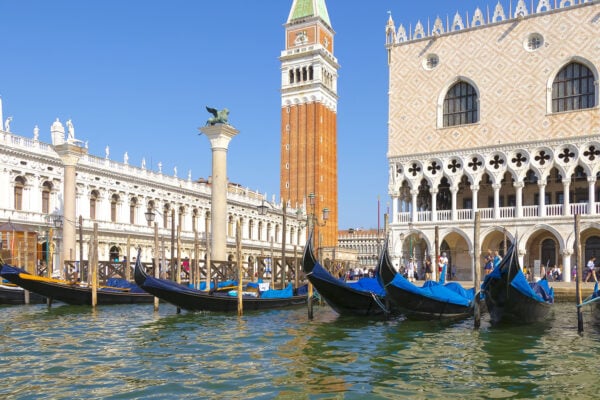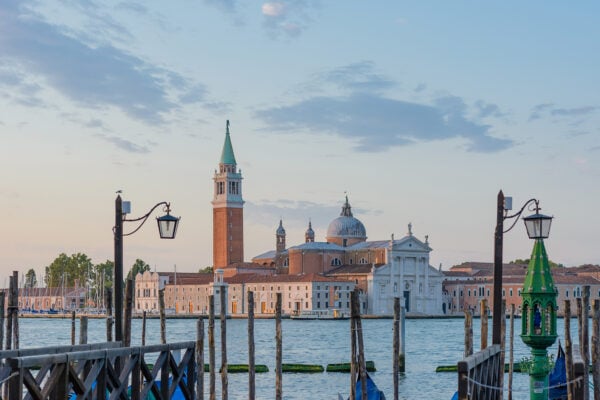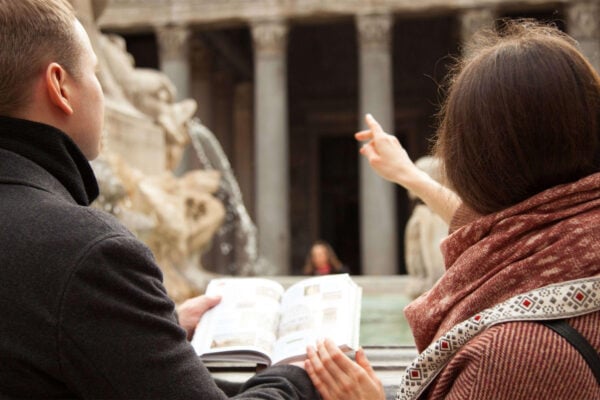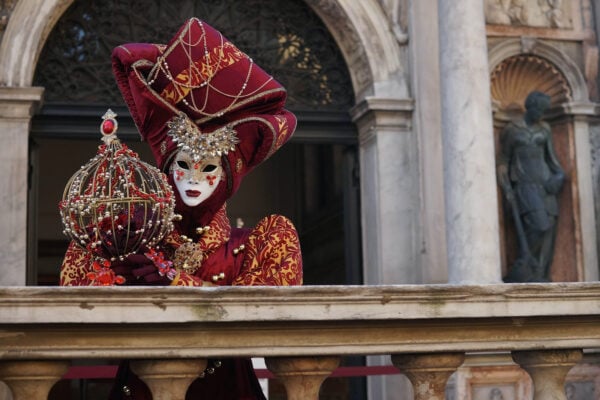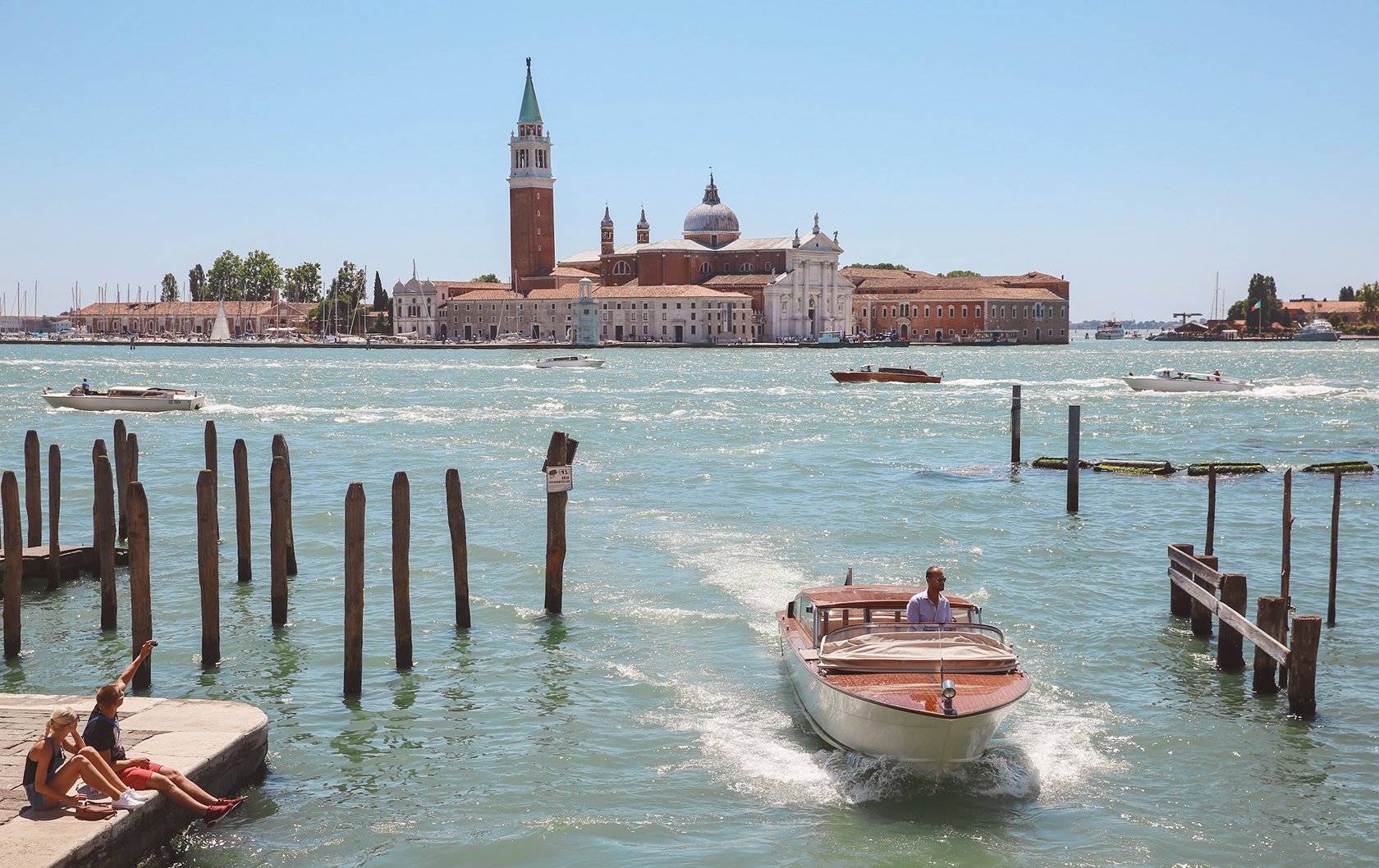
Don’t miss exploring the Venetian Lagoon while in Venice. (credit)
Every year, travelers from around the world head to Venice to make their own memories of the most unique city in the world. It’s impossible not to be enchanted by the narrow alleyways, eclectic architecture and, of course, the hundreds of canals that meander through the city. Without the iconic waterways, and the daily rhythm that they inspire, Venice might be just another city. Instead, it is a dream – suspended in time and floating in a universe all its own.
It may seem strange, but visitors to Venice often forget—or neglect to notice at all—that the city was planted in the middle of a large body of water. Venice is surrounded by many islands that have come to life in this incredibly unique environment. The development, history and culture of the area is an interdependent story that can really only be told by venturing beyond the confines of Venice. Many of the islands are uninhabited by humans and serve as a sanctuary for the hundreds of animal species that call this area home. While others have maintained their centuries-old traditions of artisanal craft work and in the process have become popular travel destinations. Still others are a living reminder of the first human settlements in the area, or the agricultural practices that continue to sustain the population today. Each is the story of a world unto itself and yet also integral to the bigger story of the Venetian Lagoon.
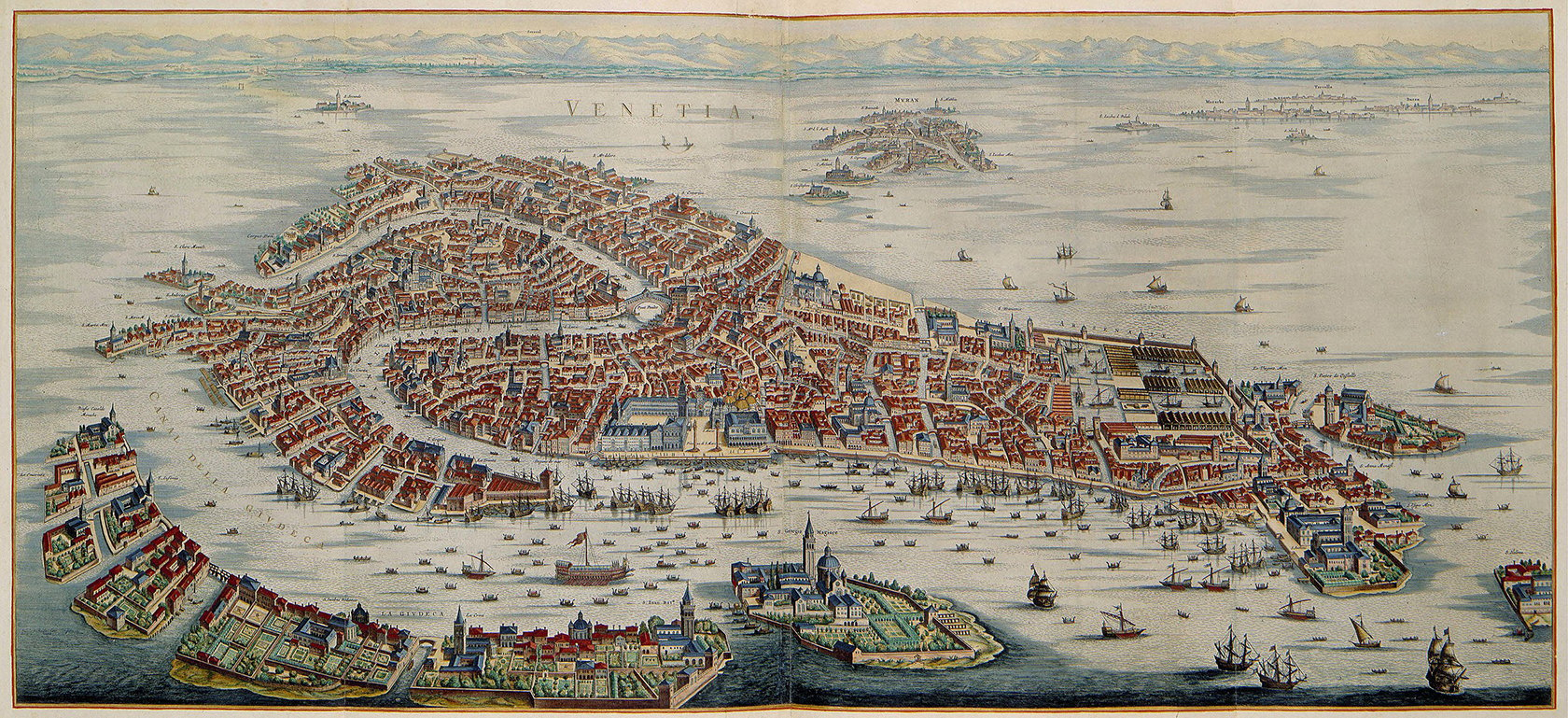
A historic map of Venice and surrounding islands published in 1704. (credit)
The Not-So-Ancient Origins of Modern-Day Venice
Known in Italian as the Laguna di Venezia and in Venetian as Łaguna de Venesia, the Lagoon covers an area of more than 200 square miles on the northeastern border of the Veneto region. The lagoon islands, including Venice, account for less than ten percent of this surface. The vast majority of the lagoon is composed of mud flats, tidal shallows and salt marshes, making it the largest wetland in the entire Mediterranean Basin. Because of its position and connection to the Adriatic Sea, the lagoon can see incredible variations in the water level. The most famous of these tidal peaks, the acqua alta, occurs in Venice between October and January and can cause flooding in parts of the city.
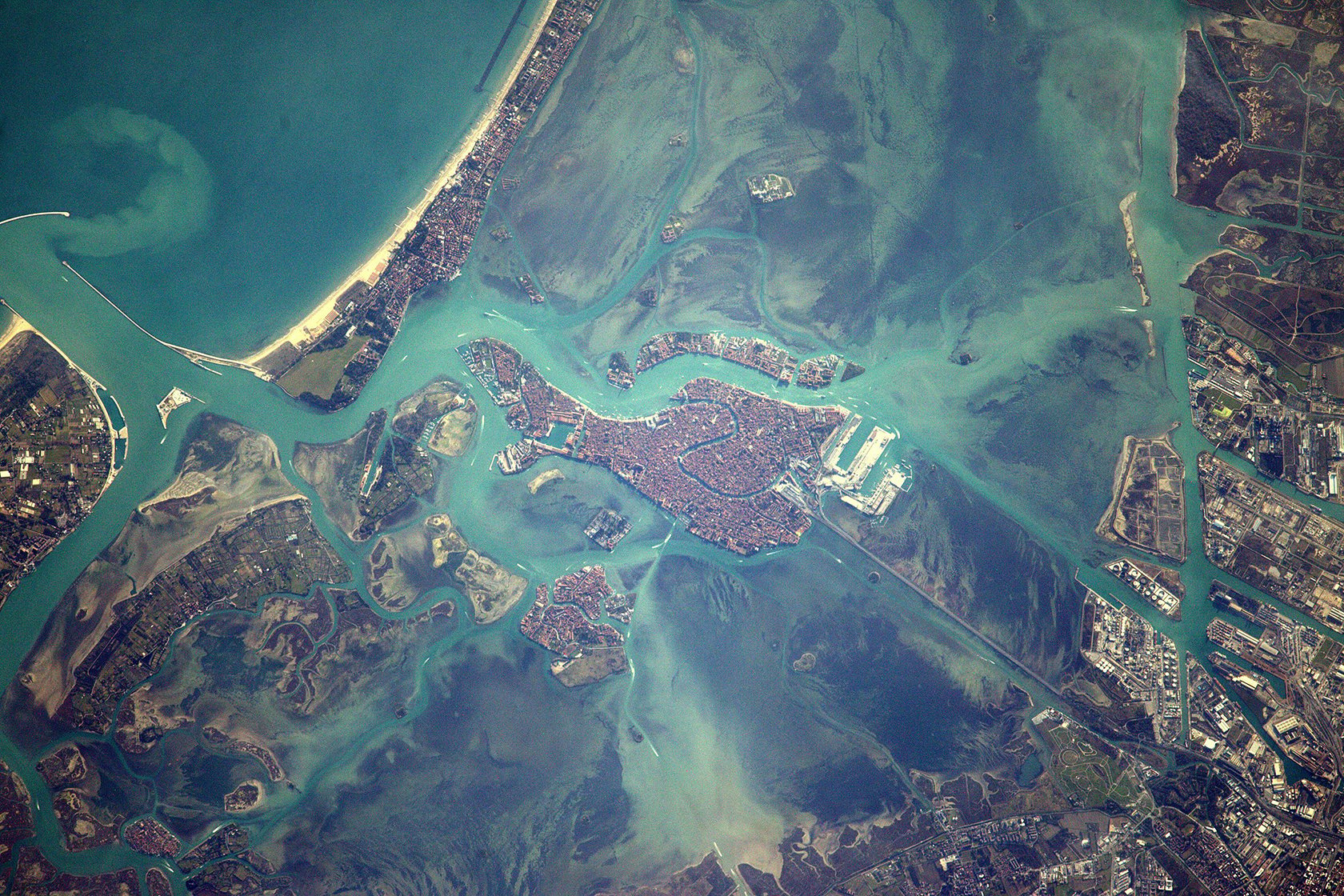
A stunning view of the Venetian lagoon from the International Space Station. (credit)
Surprisingly, the Venetian Lagoon was only formed in the last seven thousand years, when the final vestiges of the Ice Age flooded the Adriatic coastal plain. Indeed, it is the only surviving waterway from an estuary system that extended from Ravenna to Trieste during the ancient Roman period, and its importance during that period was critical. By the sixth century, tribes were carving up land in what would become Europe, and Romanized people took shelter on the islands, confident that the Huns would not cross the waters to conquer them. Those first settlers perhaps saw the potential for growth in a most unlikely land, as the naturally protected conditions of the lagoon were an essential factor in the rise of the Venetian Republic and its mighty maritime empire.
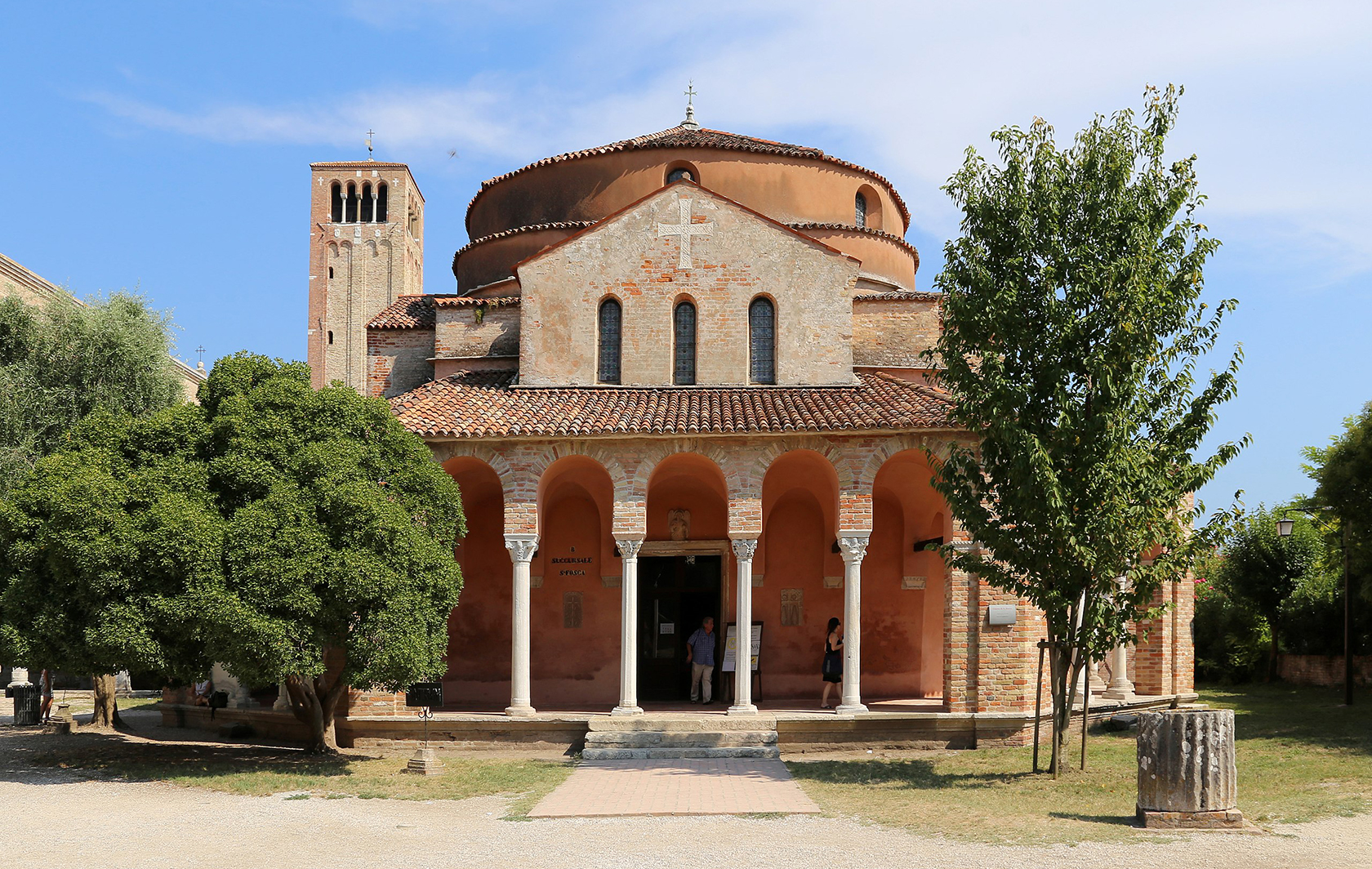
The church of Santa Fosca – one of the beautiful churches on Torcello. (credit)
However, the Venice that we know today didn’t even exist during those first years (or centuries, for that matter): its unique construction upon a mass of wood and mud pilings (known as caranto) would develop over the 1,600 years since its founding in 421AD and the 118 islands that became La Serenissima would take years to complete. Consequently, the earliest settlements in the lagoon were on the island of Torcello, which has evidence of being inhabited since the Roman Era. While serving as a shelter for those fleeing the Huns, the population of this tiny island is said to have reached 20,000 by the 10th century and it was a critically important trading point with Constantinople and the Byzantine Empire. The rise of the Venetian Republic, along with the erosion of Torcello’s natural harbors, meant that by the 15th century the population had dwindled to less than 1,000.
Today, visiting Torcello feels like stepping back into the past: the imposing Cathedral of Santa Maria Assunta houses impeccably preserved Byzantine mosaics and the idyllic garden restaurant of Locanda Cipriani is as welcoming now as it was when Ernest Hemingway took up residence there.
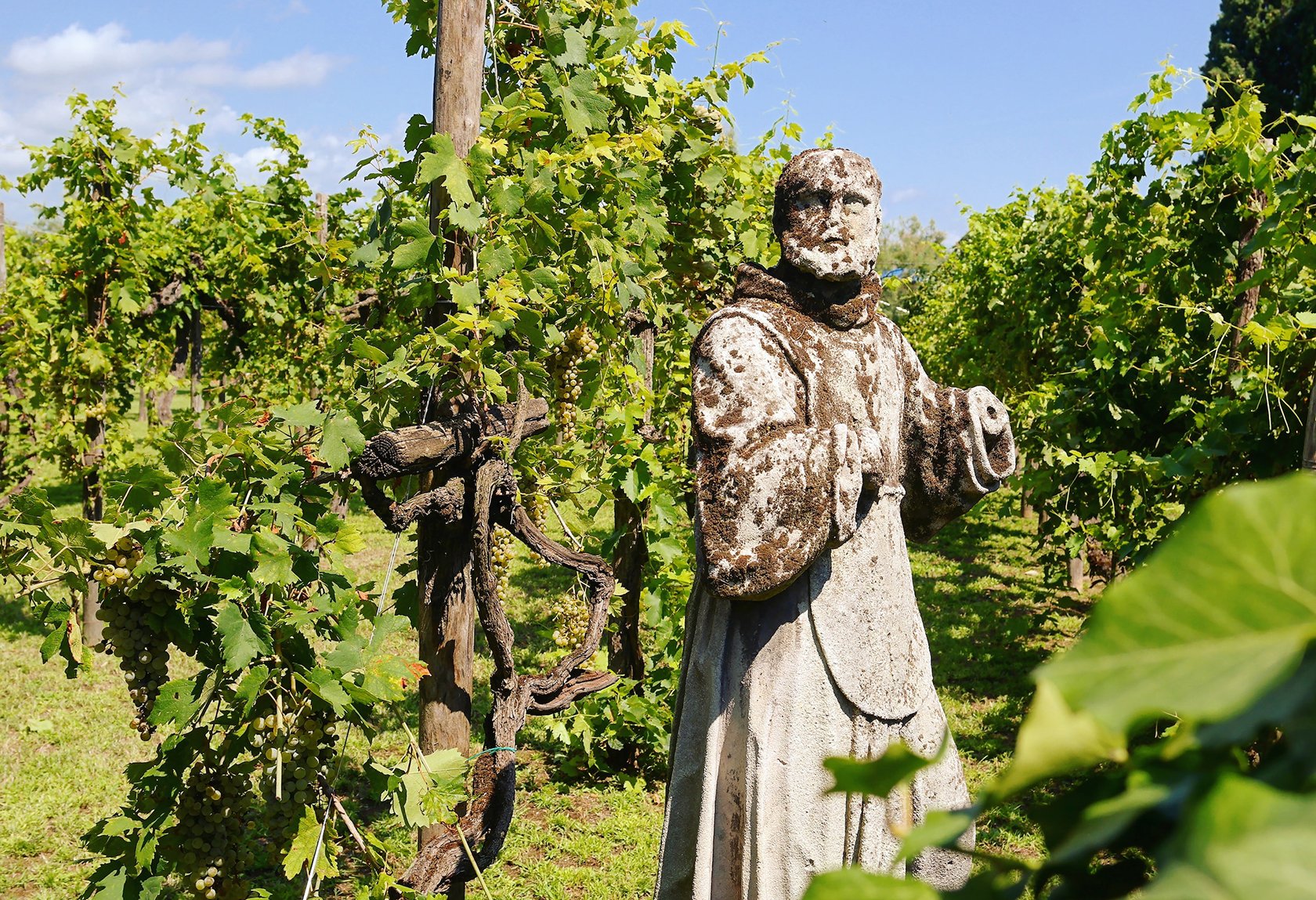
Walking through a vineyard on Torcello. (credit)
The Gardens and Vineyards of the Venetian Lagoon
While the islands that make up Venice might be shaped like a fish, they’re far from the only catch in the lagoon. Traditional cuisine depends largely on the wetlands: the two most important local fish, sardele (pilchards) and sardon (anchovies), come from the shallow waters of the lagoon. Venice’s most famous dish, bigoli in salsa, takes its unmistakable flavor from local anchovies that form an unctuous base for thick ropes of pasta. A visit to the legendary Rialto Market in the early morning is one of the best ways to see the incredible variety of seafood found in the lagoon (as well as soak in the atmosphere of early morning, mostly tourist-free Venice).
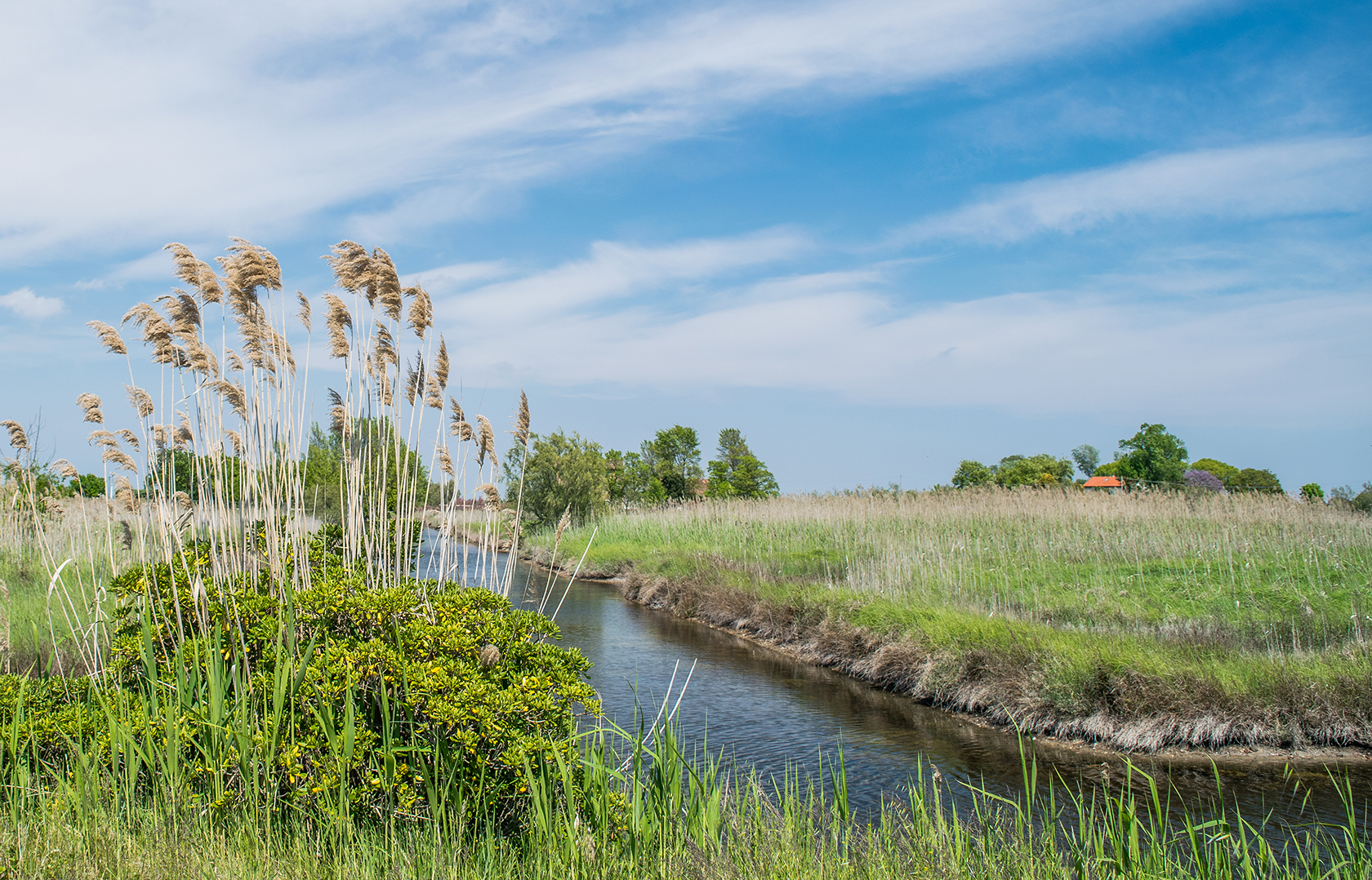
The natural beauty of the lagoon on Sant’Erasmo.
But it isn’t just local fish that you’ll find overflowing from stalls and tables at the market: vegetables from the island of Sant’Erasmo, known as “the vegetable garden of Venice,” are famous for good reason. The unique climate and soil of Sant’Erasmo result in delicious, high-quality products that you’ll find in all of the best restaurants in the area. The island itself is a protected zone with very few residences and industries in order to preserve the “countryside” of the Venetian Lagoon. But if you’re a fan of cycling or nature walks, consider planning a visit. Public transport runs from Venice to Sant’Erasmo all year round, and you’ll get the chance to see a side of the Venetian Lagoon that most people never discover!
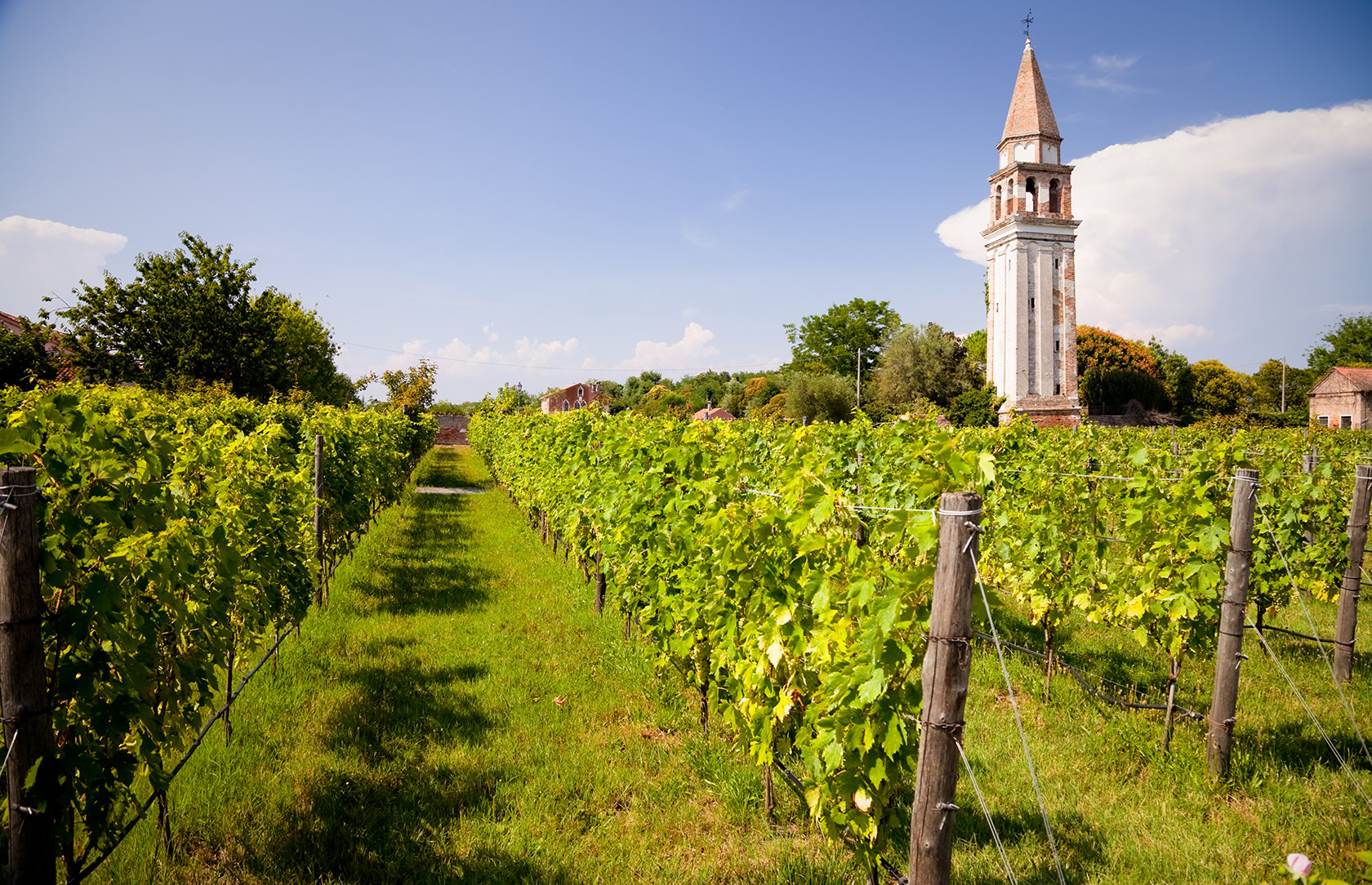
A quiet vineyard moment on Mazzorbo.
If you’ve been lucky enough to sample the famous castraure, an ancient artichoke cultivated on Sant’Erasmo, the tiny island of Mazzorbo may wind up being the unexpected highlight of your Venetian holiday. With a history that stretches back as far as Torcello but is much less documented, Mazzorbo was abandoned for centuries and in the process, much of the land that had been inhabited was given back to the elements. When people began to return in the 19th century, they dedicated the area to orchards and vineyards – to great result.
The isolation of the ecosystem on the island and the devotion of its residents to preserving local agricultural traditions made the conservation of the rare Dorona grape possible. Today, Mazzorbo is one of the only places in the world where this varietal is found and cultivated. The Venissa Estate on Mazzorbo is one of the most famous vineyards in the region and is open to the public for visits. Take a tour of the vines and then look for their bottles on the very best tables in Venice, as restaurants take particular pride in showcasing this rare local gem.
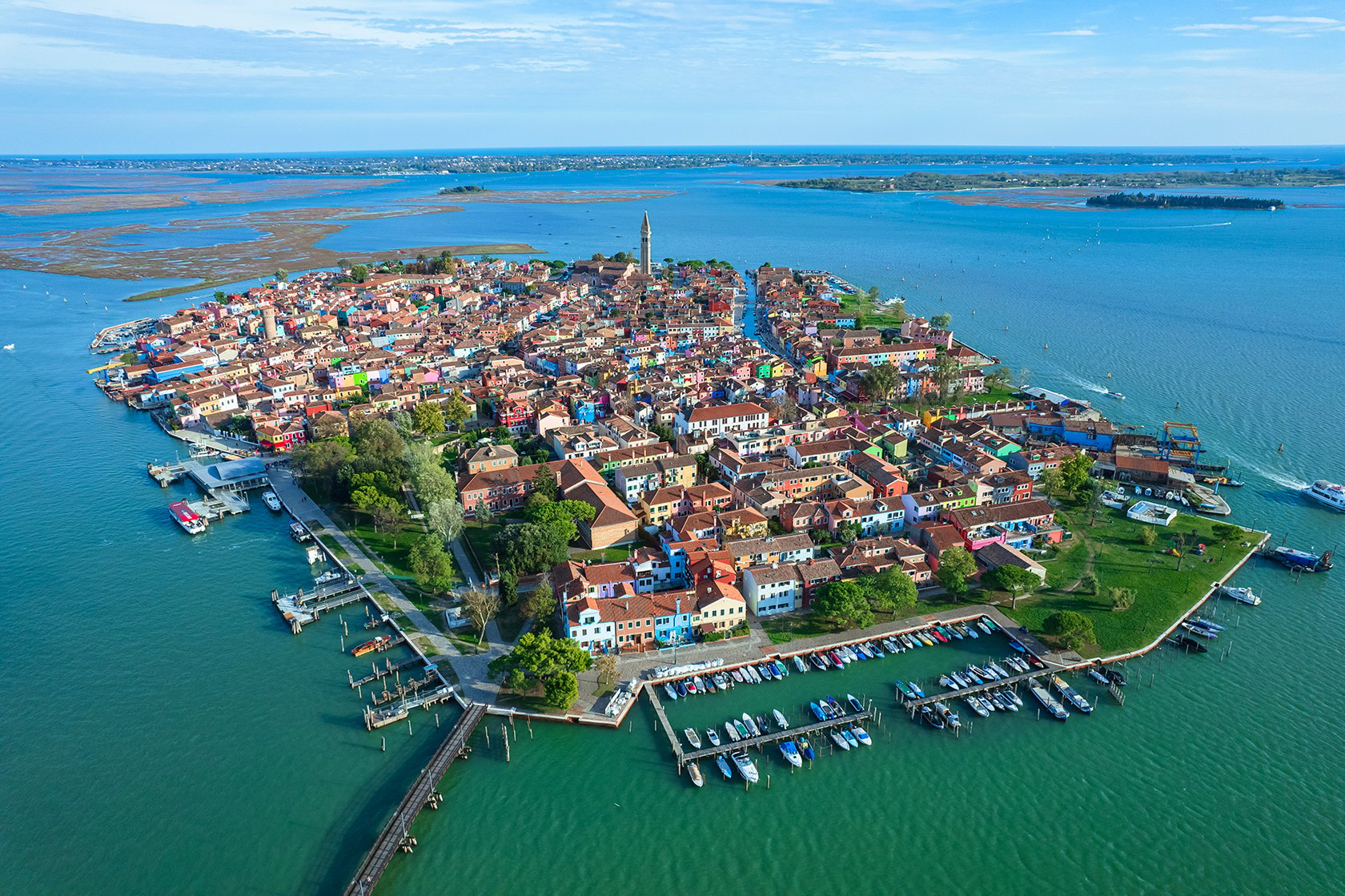
A bird’s-eye view of colorful Burano.
Art and Artisans in Burano and Murano
Once you’ve had your fill of wine on Mazzorbo, look for the wooden bridge known to locals as the “ponte longo.” This robust structure links Mazzorbo to Burano, one of the most unique and picturesque islands in the Venetian Lagoon – or anywhere else, for that matter. You’ve very likely seen photos of the brightly colored rows of houses that line the wide canals that may look at first glance like they would be closer to Amsterdam than Venice. A vaporetto ride over to Burano is a must stop for any art lover visiting Venice, but not just for its appealing colors.
Burano has a unique history all its own that both links and distinguishes it from La Serenissima. Although it too was likely settled from the time of the Romans, it only gained renown in the 16th century when needle lace making became popular with women from the island, a tradition imported from Cyprus. Before long, a school for lace making would make Burano one of the most important educational hubs in the Venetian Republic, and the iconic colors that fishermen would paint their houses to help find them in fog would also help to lead prospective seamstresses, vendors and artists to the tiny island.
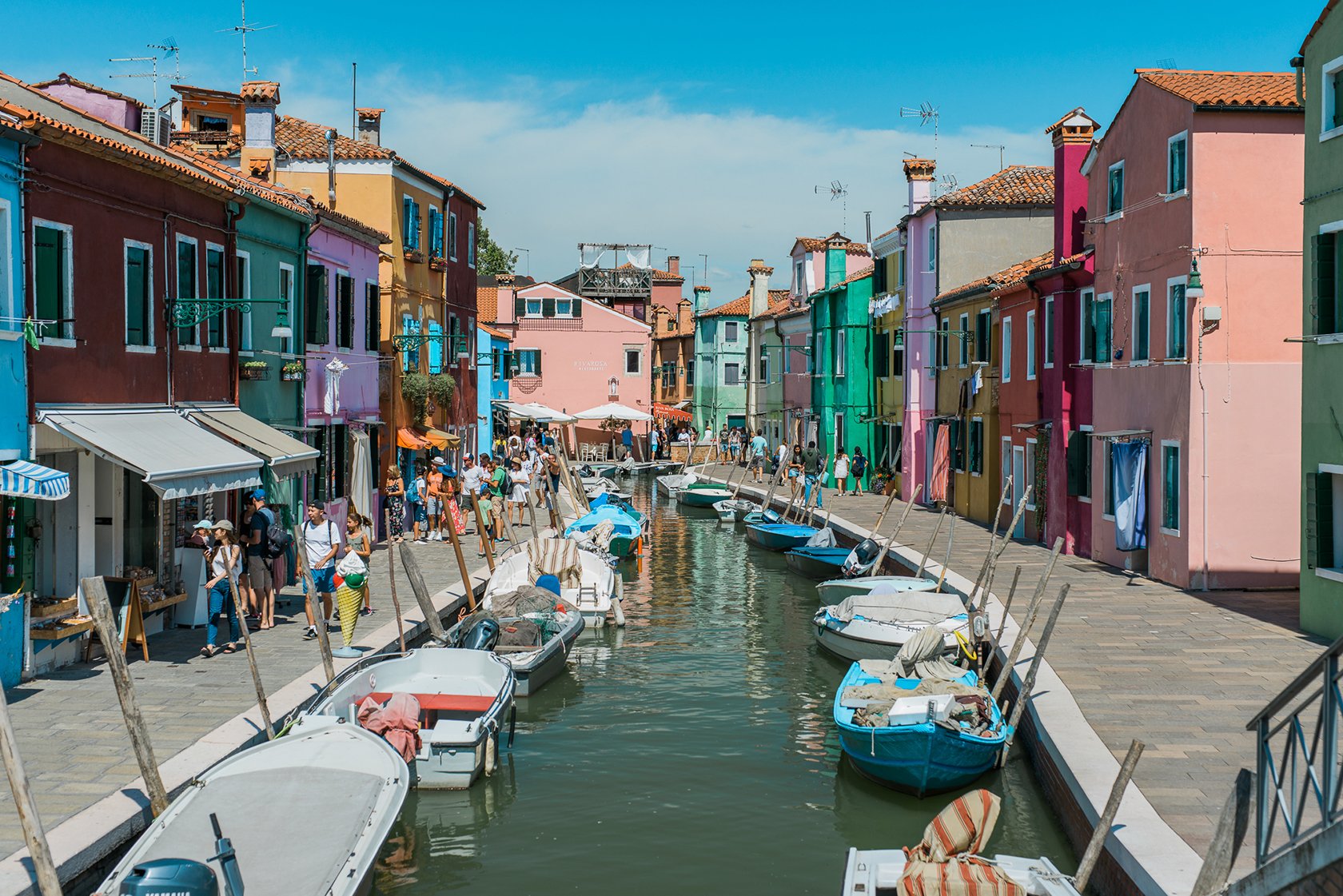
Unbelievably charming Burano island.
Today, Burano attracts a fair share of visitors, for the kaleidoscope of color that emerges from the lagoon has made it irresistible to tourists looking for that perfect holiday moment. But there is much more than photo opportunities awaiting you, and it is well worth a trip from Venice for the day. Burano is still home to many traditional lace makers who eschew modern machines to practice needle lace, and though their wares come at a premium they are timeless keepsakes. The Lace Museum is also one of the most unique places to visit in Venice: located in the famous lace school that operated from 1872 until 1970, it offers visitors the chance to step back in time and revisit the history of this unique art. With a range of food and drink on offer, you can easily spend the day wandering through Burano and soaking up history through vibrant colors.
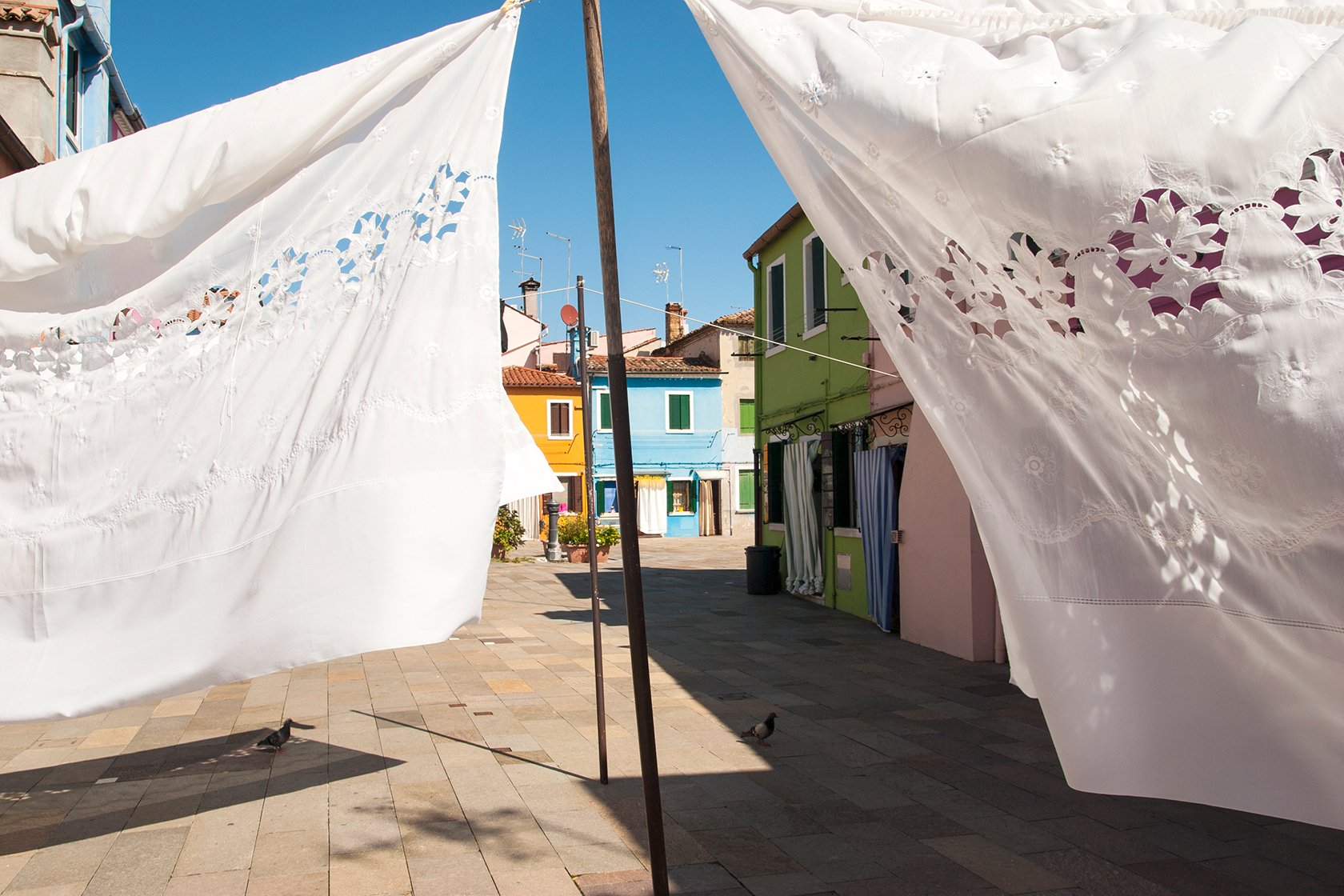
Shop for beautiful linens and lace on Burano.
Of course, anyone in search of color and kaleidoscopes cannot visit the Venetian lagoon without stopping for a while in Murano. The seven islands that compose it occupied a crucial role in the burgeoning Venetian Republic. In 1291, all glass production was moved there in order to remove the risk that the fires from glassblowing would set the wooden buildings of Venice alight. In the centuries that followed, Murano became famous for glass beads, mirrors and particularly chandeliers, many of which would be commissioned for palaces around the world. The Murano Glass Museum tells the story of this incredible development and describes in detail how different processes were born and developed among the many masters who practiced there.
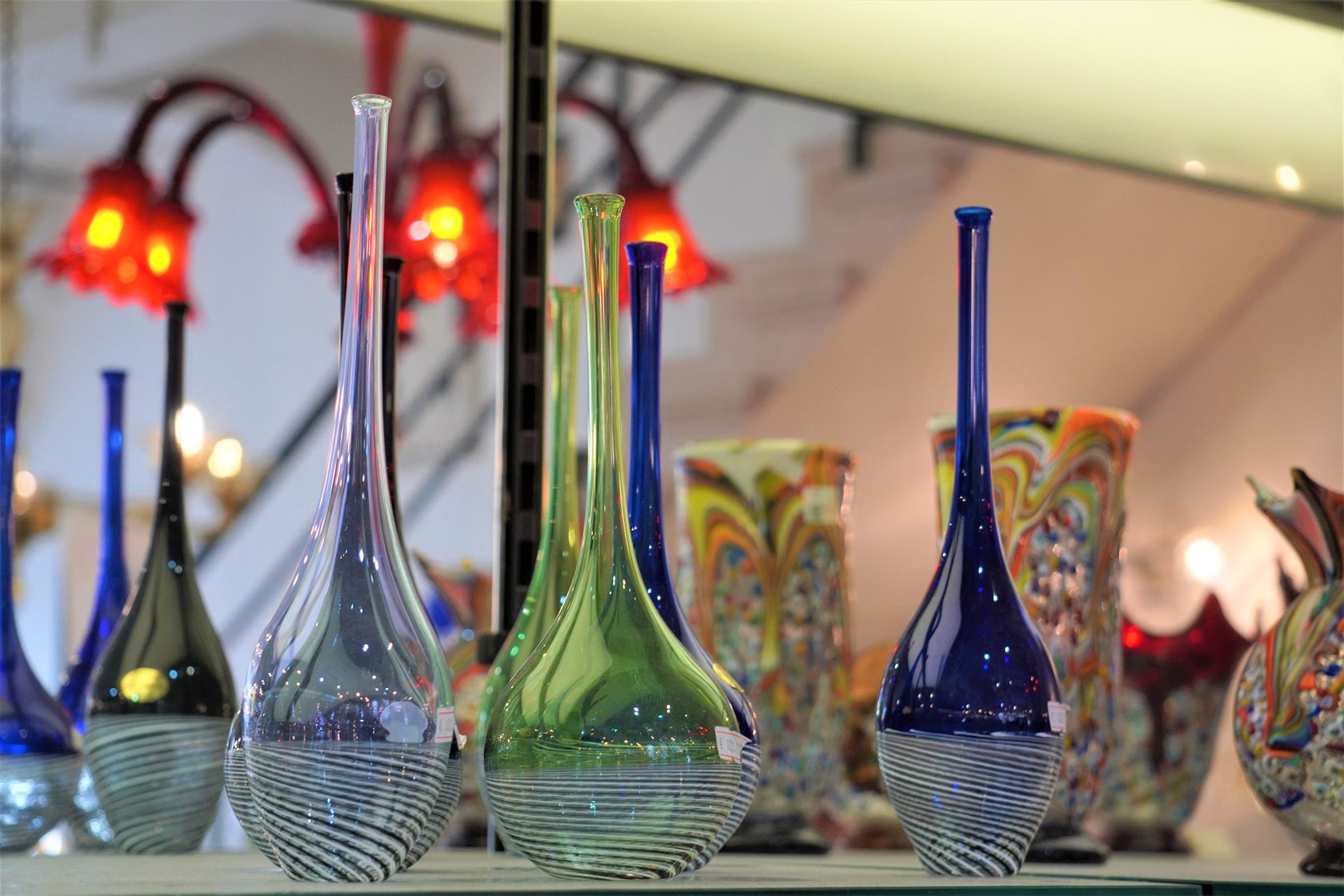
Hand blown glass on Murano. (credit)
Glassblowing is alive and well in Murano and many of the studios will allow visitors to sit and watch as glass objects are created in real time. There are more than two hundred workshops in operation and each has their own style and identity. While you may find trinkets from Murano for sale in gift shops around Venice or the mainland, it’s much more rewarding to see the process for yourself. Although Murano receives quite a lot of foot traffic it isn’t difficult to go a little further outside of the main vaporetti stops and explore the islands for yourself. It is still home to almost 3,000 people, many of whom live and work in the glass industry, and it has a completely different feeling than any of the other islands in the lagoon. Delve into the history of this colorful island on a History of Glass Making Private Tour with an expert guide who will take you to visit the Murano Glass Museum and island of Murano.
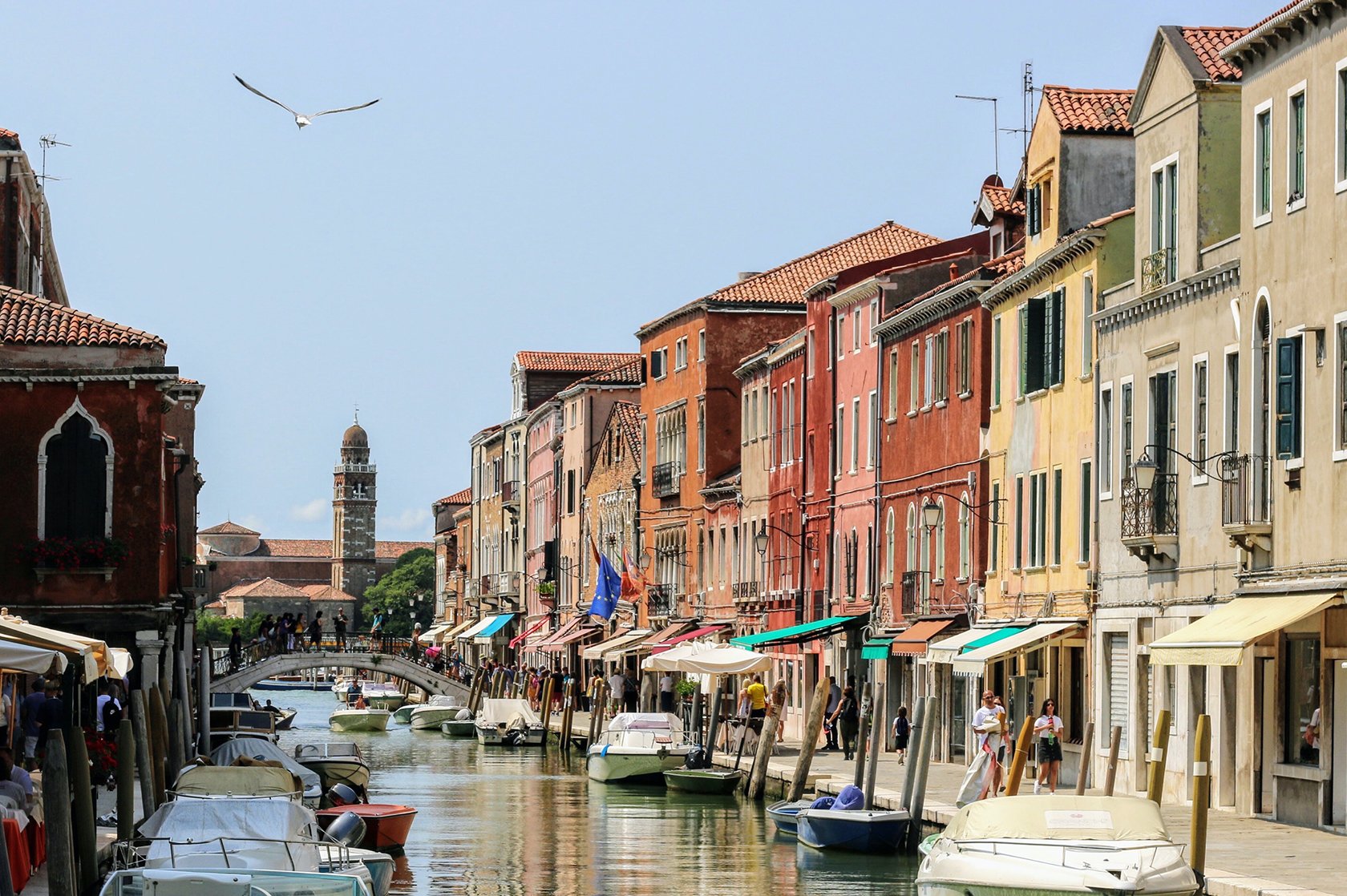
A picture-perfect scene on Murano. (credit)
In the end, you’ll find that there’s never enough time to see all that the Venetian lagoon and its many islands offer, but you’ll come away with an entirely new understanding of a place that is all too often reduced to a quick day trip. And that is worth its weight in glass, lace or gold.
Ready to book your stay in Venice? We have a collection of hand-picked Venice vacation rentals that are the perfect home base for exploring La Serenissima and the Venetian Lagoon!
